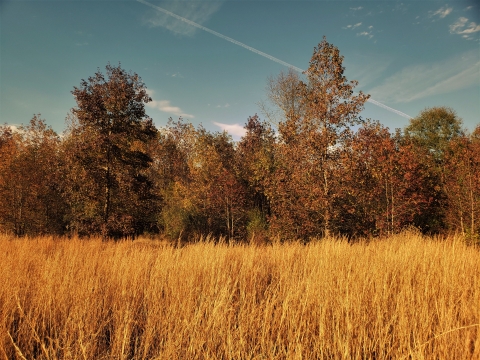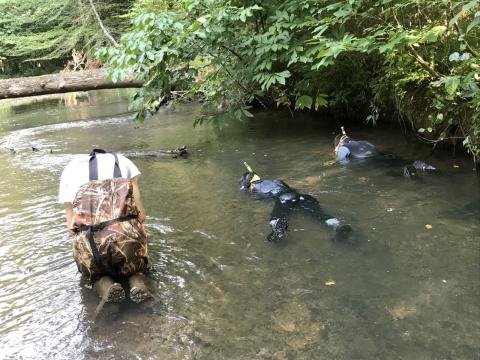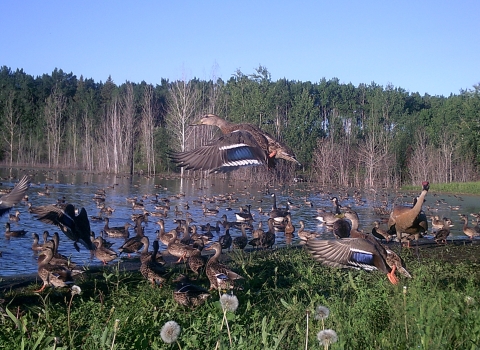Projects and Research
Oak-Pine Savanna Restoration In the eastern United States, savannas are a less common habitat type in the natural landscape. Dry, sandy, well-drained soils can produce grassy, open woodlands, which can be found in the northwest region of Patuxent. The main natural process that maintains these savannas is fire resulting from lighting strikes. Indigenous people living in the area also lit fires to maintain these open grasslands. Until recently, the savanna areas of the refuge were choked with Virginia pines, forming an ecological desert. Using a combination of management practices including: prescribed burns, timber harvesting, and herbicides, the Virginia pines were removed. In their place grasses, oaks, and pitch pines returned to support the native flora, birds, and pollinators that once thrived here. Endangered Yellow Lance Mussel Survey The Patuxent and Little Patuxent Rivers both run through the refuge. The rivers have several shallow, gravelly runs which are shaded by mature forest keeping the water cool. These are conditions preferred by most mussel communities. However, little information is known about what mussel species occupy these river stretches and where they are located. Mussel surveys in rivers are labor intensive and time consuming. Of particular interest is that the endangered yellow lance mussel as a small population does exist upriver from the refuge. During the summer of 2021, the refuge partnered with the Maryland DNR, USFWS' Chesapeake Bay Field Office and Northeast Fishery Center, to conduct environmental DNA (eDNA) analysis of water samples taken at various choice locations. This will be followed by physical searches during the low water season. |
On September 24, 2024, the Director of the U.S. Fish and Wildlife Service approved a Land Protection Plan (LPP) to establish an acquisition boundary for the Southern Maryland Woodlands National Wildlife Refuge. The FWS Northeast Region Division of Realty settled on a 31.38-acre parcel in Nanjemoy, Charles County, Maryland, to formally establish the refuge on December 5, 2024.
Final...





